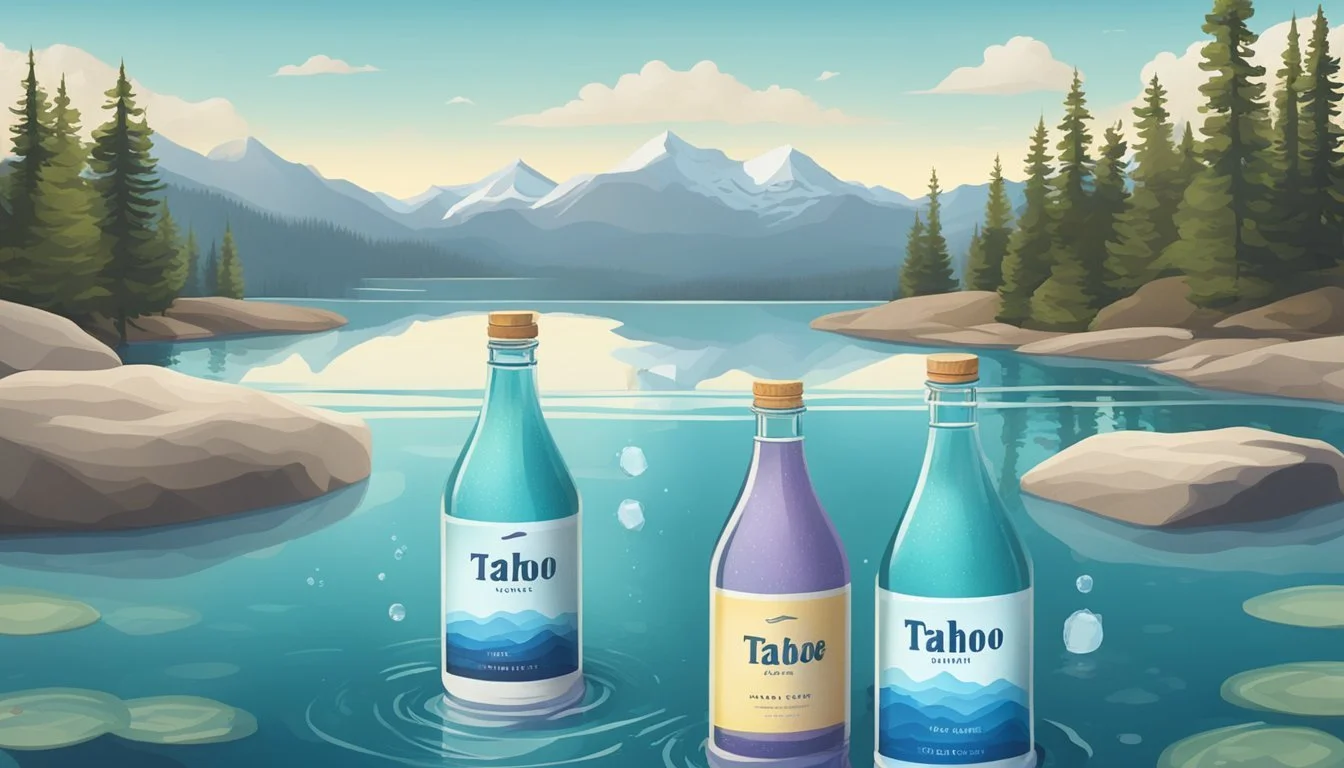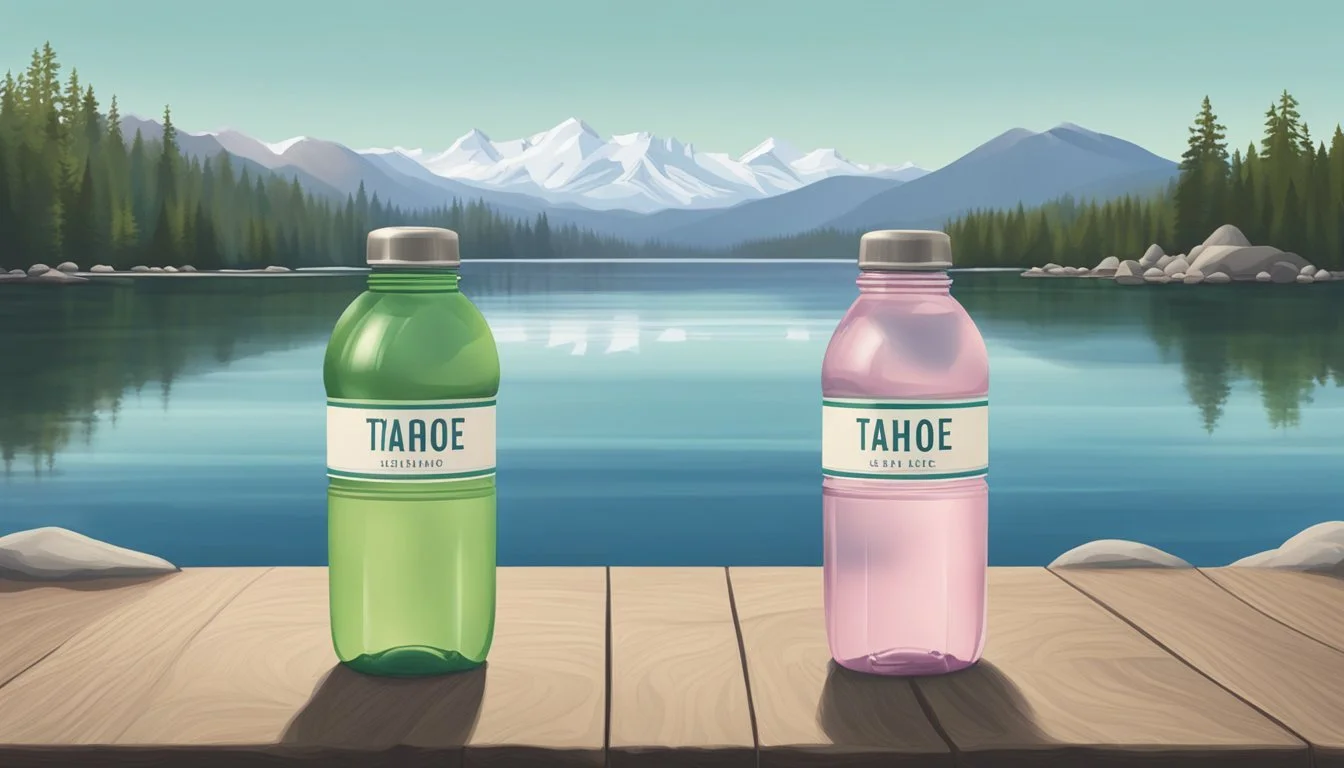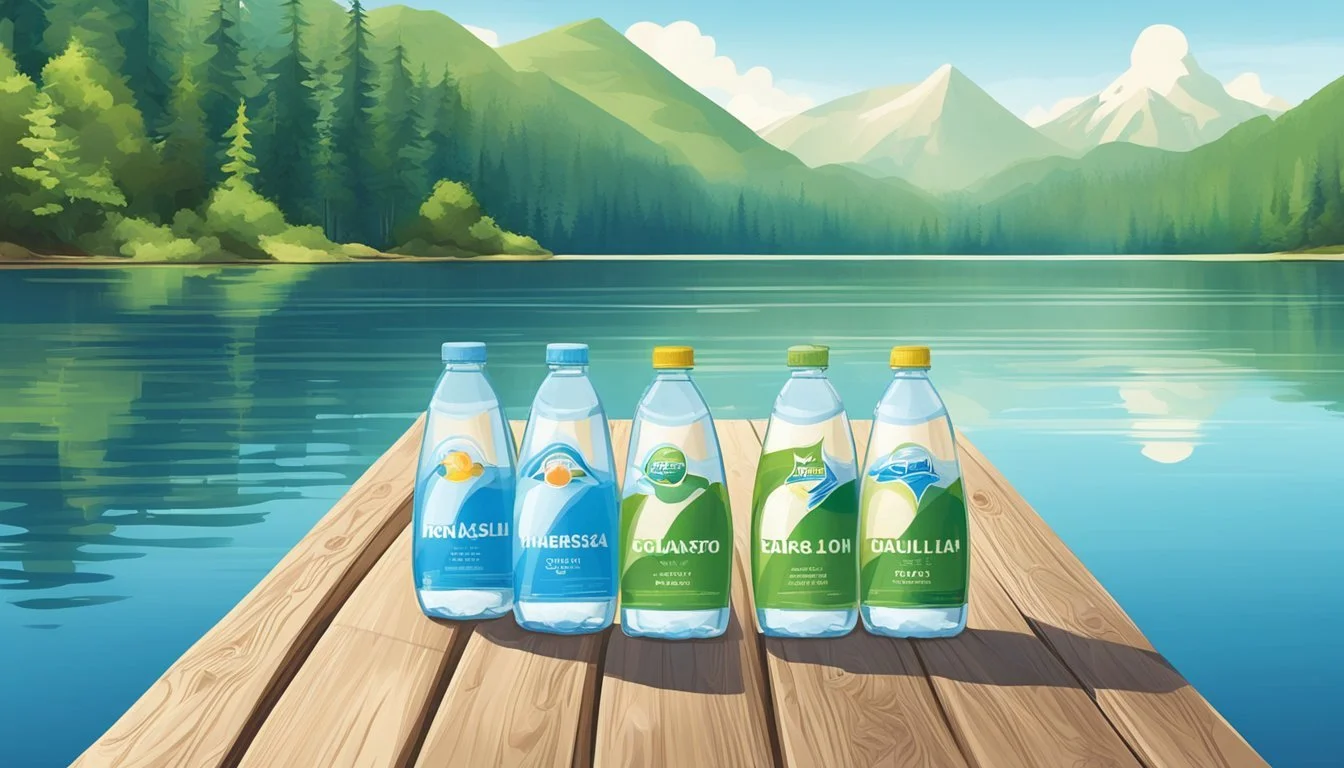Tahoe vs. Flow
Which Bottled Water is Better for You?
In the pursuit of optimal hydration, many turn to bottled water for its convenience and perceived purity. Among the myriad of options, Tahoe and Flow emerge as prominent contenders, each boasting unique characteristics that appeal to different palates and preferences. For many, the choice boils down to personal taste, with Tahoe generally offering a crisper, cleaner flavor compared to Flow.
Tahoe's reputation stems from its mountain-spring sources, which provide a refreshing and invigorating taste profile. Consumers often appreciate its natural mineral balance, making it a favorite for those who prefer a subtle yet satisfying hydration experience.
Flow, on the other hand, distinguishes itself with its eco-friendly packaging and naturally alkaline water, sourced from sustainable springs. This makes it an appealing option for environmentally conscious individuals who seek both quality and sustainability in their bottled water choices. By examining the distinct features and benefits of each brand, readers can make an informed decision on which water best suits their needs.
Understanding Bottled Water
Bottled water comes from various sources and offers different qualities, such as mineral content and levels of filtration. Key considerations include brand reputation, water source, and potential health impacts.
An Overview of Bottled Water Brands
Bottled water brands differ in their sourcing and processing. Popular brands include Arrowhead, known for its mountain spring water, and Flow, recognized for its alkaline water and eco-friendly packaging.
Arrowhead boasts natural minerals due to minimal filtration, making it appealing for those seeking a more "natural" taste.
Flow offers alkaline water, marketed for its health benefits, such as balanced pH levels. Its eco-friendly packaging also appeals to environmentally conscious consumers.
The Bottled Water Industry
The bottled water industry includes various types, such as spring water, purified water, and mineral water. Spring water is sourced from natural springs, containing natural minerals and typically undergoing minimal filtration.
Purified water undergoes rigorous filtration processes, such as reverse osmosis, to remove impurities. Despite the process, it may lack minerals found in spring water.
The industry's growth is driven by convenience. Bottled water's accessibility in stores makes it a practical choice for many, despite its higher cost compared to tap water. Variations in health claims and marketing strategies influence consumer choices and brand preferences.
The Source of the Matter
Different bottled water brands offer a variety of water sources that significantly impact taste, quality, and environmental sustainability. This discussion will look into how the origin of water affects its overall characteristics.
Natural Spring Water vs. Purified Water
Natural spring water flows naturally from underground sources. It typically contains minerals picked up as the water travels through rocks, giving it a distinct taste. Arrowhead, for instance, sources its water from various mountain springs, renowned for their fresh and crisp flavor.
Purified water, on the other hand, undergoes extensive treatment processes like distillation, deionization, or reverse osmosis to remove impurities. Brands like Flow focus on purification techniques to ensure the water is free from contaminants, often adding minerals back to enhance the taste.
Consumers who prefer natural flavors and potential health benefits from minerals might opt for spring water. Those looking for the highest level of purity might lean towards purified options.
Assessing Water Sources and Aquifers
Natural springs are typically tapped in remote, protected areas to maintain purity. These sources depend on aquifers, which are natural underground reservoirs. The health of these aquifers impacts water quality, making it crucial to monitor and preserve these environmental resources.
For instance, Tahoe sources its water from springs in pristine locations, ensuring minimal environmental impact and high-quality water. Flow's commitment to eco-friendly packaging complements its purified water, appealing to environmentally conscious consumers.
When choosing bottled water, considering where the water is sourced from and how the aquifers are managed provides insight into both the quality of the water and its sustainability impact.
Quality and Purity Insights
Tahoe and Flow are two prominent bottled water brands. Both prioritize water quality and purity, yet they employ different methods to achieve these standards.
Water Quality Testing and Standards
Tahoe sources its water from the pristine environment around Lake Tahoe. This natural source is known for its high quality and low levels of contaminants. Tahoe implements regular testing to ensure their product meets strict safety and quality standards. The water undergoes periodic tests for bacteria, heavy metals, and other impurities. Strict adherence to standards like those set by the FDA and EPA guarantees consumer safety.
Flow, on the other hand, sources from natural springs in Canada. Flow’s claims revolve around maintaining natural qualities and high mineral content. Flow also performs rigorous testing to ensure compliance with North American regulatory standards. Tests for PFOA, PFAS, and other contaminants ensure the water remains pure and safe for consumption. Flow's commitment to transparency includes providing detailed reports on their water quality.
Filtration and Purification Processes
Tahoe uses minimal processing to preserve the natural mineral composition of its water. The process includes basic filtration to remove any physical impurities, yet it avoids excessive treatment. This approach maintains the natural taste and mineral content, appealing to consumers who prefer a less processed product. It’s worth noting that limited processing means relying heavily on the purity of the original water source.
Flow employs an advanced filtration system known as reverse osmosis (RO) combined with ultraviolet (UV) treatment. This method ensures the removal of nearly all contaminants, rendering the water exceptionally pure. RO is effective against a wide range of impurities, including bacteria, viruses, and chemical contaminants. The added UV treatment further purifies, ensuring a product that is safe and clean, preserving its natural alkaline properties.
Health and Hydration
The discussion around bottled water brands often centers on their benefits concerning health and hydration. Understanding the mineral content and electrolyte presence is crucial for making an informed choice.
Health Benefits of Proper Hydration
Proper hydration supports major bodily functions, including temperature regulation and nutrient transportation. Drinking adequate water helps maintain energy levels and can improve cognitive functions.
Staying hydrated also aids in digestion and promotes healthy skin. It supports kidney function by helping to flush out toxins. Consistently drinking water can prevent urinary tract infections and reduce the risk of kidney stones.
Hydration ensures that bodily fluids are balanced, which is essential for overall well-being. A well-hydrated body functions more efficiently, whether during physical activity or at rest.
Electrolytes and Mineral Content
Electrolytes are substances like sodium, potassium, and magnesium that help regulate nerve and muscle function. Both Tahoe and Flow contain varying levels of these electrolytes, making them strong candidates for optimal hydration.
Magnesium, found in both, plays a role in muscle and nerve function. It also aids in the regulation of blood pressure. Calcium, another essential mineral, is crucial for bone health and muscle function.
Flow's water contains naturally occurring minerals, whereas Tahoe often highlights its purification process, which retains essential electrolytes. Minerals like these contribute to the water's taste and health benefits. Understanding the specific mineral content can guide consumers toward the most suitable option for their health needs.
Taste and Texture Analysis
When comparing Tahoe and Flow bottled water, differences in flavor profile and mouthfeel are evident. These nuances can significantly impact user preference.
The Flavor Profile of Water
Tahoe Water: Tahoe water is often praised for its crisp and clean taste. Sourced from the pristine Tahoe Basin, it has a lower sodium content, which contributes to a purer flavor. The mineral composition, particularly its higher potassium levels, gives it a subtle yet noticeable sweetness.
Flow Water: Flow water is celebrated for its slightly alkaline nature, which imparts a smoother, almost velvety taste. This alkaline quality enhances the natural flavors, making it a preferred choice for those who enjoy a more rounded water taste. Its eco-friendly packaging material does not interfere with its flavor integrity.
Texture and Mouthfeel
Tahoe Water: The mouthfeel of Tahoe water is typically described as light and refreshing. Its balanced mineral content ensures that it does not leave a residual aftertaste. This makes it a popular choice for people who prefer a water that quenches thirst without lingering effects.
Flow Water: Flow water’s alkaline properties contribute to a softer texture. Users often note a smooth, almost silky sensation on the palate. This velvety mouthfeel makes it enjoyable to sip, particularly for those sensitive to water hardness. Flow’s unique packaging also ensures that the water maintains its textural purity.
By focusing on these attributes, individuals can better decide which bottled water aligns with their preference for taste and texture.
Brand Comparison: Tahoe vs. Flow
Tahoe and Flow represent distinct approaches within the bottled water market, each with unique origins, product offerings, and brand philosophies. This comparison will explore the specifics of both brands, from the sources of their water to the characteristics that set them apart.
Tahoe: Origin and Offerings
Tahoe bottled water is sourced from natural springs, emphasizing purity and minimal processing. The brand maintains the natural mineral content of spring water while removing impurities through basic filtration.
Tahoe's products are known for their crisp, clean taste, with water sourced from pristine locations. Their packaging focuses on practicality, often using recyclable materials, reflecting a moderate concern for environmental impact.
In terms of market position, Tahoe appeals to consumers who value natural spring water for its taste and minimal processing.
Flow: Brand Philosophy and Products
Flow stands out with its strong commitment to sustainability and health. The brand sources its water from natural artesian springs and ensures a high mineral content, contributing to its health benefits.
Flow's alkaline water typically has a pH level of 8.1, promoting balance in the body. The brand's environmentally friendly packaging, including paper-based bottles, underlines its commitment to reducing plastic waste.
Flow's market position targets health-conscious consumers and eco-friendly buyers, with a focus on superior hydration through alkaline water and sustainable practices. This unique blend of health benefits and environmental consciousness distinguishes Flow from competitors.
Environmental Impact and Sustainability
When comparing Tahoe and Flow bottled water brands, examining their environmental impact and sustainability practices is crucial. Key factors include the use of eco-friendly packaging and the companies' overall environmental responsibility.
Eco-Friendly Packaging and Practices
Flow stands out for its commitment to sustainable packaging. It uses Tetra Pak containers, which are made from mostly renewable materials and are fully recyclable. This significantly reduces plastic waste, a major environmental concern with traditional bottled water brands.
In contrast, Tahoe still primarily uses plastic bottles. While some of its bottles are recyclable, plastic remains a less sustainable option compared to renewable materials. Consumers seeking a greener choice may lean towards Flow due to its packaging innovations.
Water Companies and Environmental Responsibility
Flow is known for its rigorous approach to sustainability. The company sources its water from naturally alkaline springs and ensures minimal disruption to the ecosystem. Additionally, Flow invests in renewable energy to power its operations, further enhancing its environmental credentials.
Tahoe, while making strides in some areas, still lags behind in comprehensive environmental responsibility. Although it promotes recycling its plastic bottles, the company has yet to adopt widely eco-friendly practices or renewable energy in its production process.
By focusing on these key aspects, consumers can better understand the environmental footprint of each brand and make informed decisions.
Accessibility and Convenience
The accessibility and convenience of both Tahoe and Flow bottled water can significantly impact consumer preferences. Investigating availability in stores and the role of convenience in buying choices provides insights into how each brand stands.
Availability in Grocery Stores and Convenience Stores
Tahoe bottled water is found in many large grocery stores and convenience stores. This broad distribution ensures that consumers can easily purchase it during their regular shopping trips.
Flow's presence in grocery and convenience stores is comparatively less widespread. However, Flow can be commonly found in health-focused stores and eco-friendly boutiques.
Though Flow might not be as ubiquitous, its specialized availability aligns with its market positioning as an eco-conscious option.
The Role of Convenience in Consumer Choices
Convenience plays a crucial role in determining consumer choices between Tahoe and Flow. Tahoe's affordability and extensive presence make it a hassle-free option for those looking for quicker, easier purchases.
Flow appeals to environmentally conscious buyers who are willing to seek out its more sustainable packaging.
Price can be an important factor as well. Tahoe's generally lower cost makes it a convenient choice for budget-minded consumers.
In contrast, Flow might find its niche among those who prioritize sustainable packaging and are ready to pay a premium for it.
Pricing and Affordability
When comparing Tahoe and Flow bottled waters, several points about cost and overall value become evident. This section analyzes not just the price tags but also the value they provide for consumers seeking affordable options in premium water brands.
Comparing Costs of Different Water Brands
Tahoe and Flow vary significantly in their pricing. Tahoe, often sourced from the pristine Tahoe Basin, generally commands a higher price due to its reputation and purity standards. Consumers can expect to pay around $2.00 to $2.50 per liter.
Conversely, Flow, known for its eco-friendly packaging and alkaline water, is priced slightly lower, ranging from $1.50 to $2.00 per liter. This makes Flow a more affordable option for those looking for premium water without breaking the bank.
Assessing Value for Money
While Tahoe and Flow both offer high-quality water, the value they provide can differ. Tahoe’s higher cost corresponds to its low sodium and moderate potassium content, appealing to those who prioritize mineral content. For some, this nutritional profile justifies the higher expense.
Flow, on the other hand, prides itself on sustainable packaging and a balanced pH level. Its competitive pricing and commitment to environmental sustainability offer significant value. Consumers interested in both quality and eco-friendly practices might find Flow to be the better bang for their buck.
Table: Price Comparison
Brand Price per Liter Key Features Tahoe $2.00 - $2.50 Pristine source, low sodium Flow $1.50 - $2.00 Eco-friendly, balanced pH
By examining cost and value, consumers can make a more informed decision based on their preferences and budget.
The Bottom Line
When comparing Tahoe and Flow bottled waters, several factors come into play.
Quality is a primary concern. Tahoe is sourced from the pristine Tahoe Basin, boasting a unique mineral profile. Flow, on the other hand, is known for its alkaline pH and claims of enhanced hydration benefits.
Affordability is another important aspect. Both brands fall into the premium bottled water category, but prices can vary widely depending on the region and retailer. Generally, Flow is slightly more expensive due to its eco-friendly packaging and brand positioning.
Availability may influence your choice. Flow is widely available in many health food stores and online platforms. Tahoe, while less ubiquitous, can still be found in specialized stores and select supermarkets.
When it comes to health considerations, individuals looking for higher mineral content may prefer Tahoe. Flow's alkaline water is often marketed to those seeking potential benefits like improved hydration and pH balance.
Brand credibility further sets these waters apart. Flow has established itself as a leader in sustainable packaging, using Tetra Pak cartons. Tahoe emphasizes purity and natural sourcing, appealing to those who prioritize untouched water sources.
Factor Tahoe Flow Quality Unique mineral profile Alkaline, claims of enhanced benefits Affordability Premium, varies by retailer Generally higher Availability Selective stores, supermarkets Health stores, online Health considerations Higher mineral content Alkaline, pH balance Brand credibility Pure, natural sourcing Sustainable packaging
In essence, the choice between Tahoe and Flow depends on personal preferences related to quality, health benefits, and sustainability.
More About Tahoe
Mountain Valley Spring Water vs Tahoe: Which Bottled Water is Better?
Tahoe vs Richard's Rainwater: Which Bottled Water is Better?
Tahoe vs Whole Foods Italian Still Mineral water: Which Bottled Water is Better?







